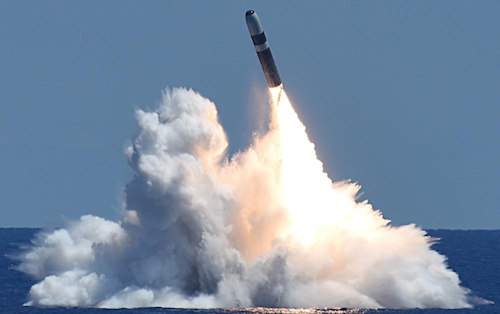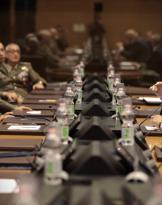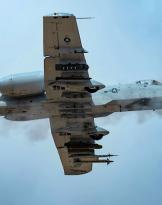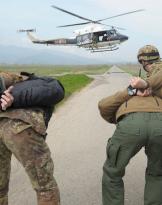It is a known fact that the use of nuclear weapons has been feared several times - most recently a few days ago - by the Russian Federation, in the conflict it is engaged in against Ukraine.
Just as it is also known that the aforementioned has, in turn, sent back to Western countries - the United States (in primis), but also Great Britain -, as well as to Zelensky himself, the fact of having invoked its use, more or less covertly. Without considering, on the other hand, what was announced, also recently, by Seoul, regarding the possibility of carrying out joint exercises precisely with the United States, with a view to contrasting the growing threats from North Korea.
Regardless of "who provoked whom", in the first case, and net of the analysis of the so-called nuclear deterrence, from which these dynamics often arise, the question that arises is whether, in terms of international law and, more specifically, in terms of international humanitarian law, the use of nuclear weapons is lawful or not.
Unfortunately, the answer may surprise you…
The use of nuclear weapons: always one vexed question
In general, the legitimacy or otherwise of the use of nuclear weapons has been a topic of debate since the end of the Second World War, after the devastation of Hiroshima and Nagasaki by the United States (the January 24, 1946, the United Nations General Assembly meeting in London adopted its first historic resolution using the consensus method - called UNGA Res 1(I) - which set up a commission of the UN Security Council to guarantee "the elimination from national arsenals of atomic weapons and all other weapons adaptable to mass destruction"), but, to date, has not yet found a certain and definitive answer.
In fact, among jurists, on the one hand, there are those who argue that they would be indiscriminate weapons that would cause unnecessary suffering, the effects of which, moreover, would also end up involving states not participating in the conflict, therefore in contrast with the principle of neutrality; and who, on the other hand, theorizes their possible use, in conformity both with the principle of non-discrimination and with those of neutrality and the prohibition of causing unnecessary suffering, since, as generally happens, the correspondence of a weapon to said principles should be evaluated in relation to the importance of the military objective and the criteria of necessity and proportionality.
 The Opinion of the International Court of Justice
The Opinion of the International Court of Justice
On this point, the International Court of Justice intervened, through its advisory opinion issued in 1996, following a question posed by the General Assembly of the United Nations whether “the threat or use of nuclear weapons under any circumstances is permitted under international law”.
Well, the aforementioned, after having stated that, in international law, there are neither explicit prohibitions nor authorizations for the use of nuclear weapons and that for any recourse to them the limitations of the jus ad bellum (as required by the United Nations Charter) and of the ius in beautiful (that is, international humanitarian law), he concluded, on this point, that "the threat or use of nuclear weapons would generally be contrary to the rules of international law applicable to armed conflicts and, in particular, the principles and rules of humanitarian law. Nonetheless, the Court, having considered current international law, as well as the factual elements in its possession, is unable to definitively establish whether the threat or use of nuclear weapons could be considered legitimate or illegitimate in an extreme case of self-defense, in which the effective survival of a State was at stake".
If on the one hand, therefore, the Court affirmed the general illicitness of both the use and, before that, even the "simple" threat of using nuclear weapons, on the other, he did not absolutely rule out the illegality of such a scenario, thus leaving a dangerous weak point in this sense.
Not that - mind you - the opinion "de qua" can be considered binding, for the States, but it is certainly a legal basis of support not second-rate for anyone wishing to justify, at the level of international law, its action in this sense (on the other hand, the resolutions of the United Nations are not equally binding, one of which was mentioned above, in subject matter).
More courage could have been - and should have been - but, probably, different dynamics weighed on the opinion in question.
The Treaty for the Prohibition of Nuclear Weapons of 2017
On 22 January 2021, the Treaty on the Prohibition of Nuclear Weapons entered into force, thanks to the passing of the fifty ratifications envisaged therein.1 which, based precisely on the principles and rules of international humanitarian norms, affirmed, in particular, the principle that the right of participants in an armed conflict to choose methods of combat is not unlimited, as well as both the rule and each armament must be able to distinguish between civilians and combatants, and the prohibition of the use of weapons that may cause unnecessary injury or unnecessary suffering.
In particular, the use and threat of nuclear weapons are explicitly prohibited by art. 1, par. 1, lit. d), and this also in the event of retaliation, since the States parties are under an obligation never to resort to atomic weapons (“never under any circumstances”).
The provisions of this Treaty, however, are of a purely conventional nature and therefore, at the moment, valid only for the states that have signed it: certainly, it can be considered an important step forward, also on the basis of what the International Court of Justice affirmed in the opinion mentioned above, also regarding the obligation to pursue in good faith and conclude negotiations that lead to global nuclear disarmament under strict and effective international control.
 What is the destructive power of nuclear weapons?
What is the destructive power of nuclear weapons?
In general reasoning, both of a political and military nature, it is necessary, nowadays, to keep in mind the distinction between "tactical" nuclear weapons and "strategic" nuclear weapons.
The former (TNW), also called nuclear weapons non-strategic (NSNW), were designed to be used on a battlefield in military situations, primarily with friendly forces in close proximity and possibly also over friendly disputed territory, with a view, perhaps, to destroy a column of tanks or, if used in sea, a naval group.
The second (SNW) are designed to be used on targets often in settled territories remote from the battlefield as part of a strategic plan, such as military bases, military command centers, weapons industries, transportation, and energy infrastructure and densely populated areas such as cities and towns, which often contain such targets.
They (normally) differ significantly both in range of action (range), both for explosive potential (yield), both for fallout (i.e. the fallout of radioactive material following detonation).
The simulation on Rome
Two years ago, the Science and Global Security (SGS) program of the American Princeton University hypothesized a three-phase scenario called "Plan A", which various American media are re-proposing in the light of the Russian invasion of Ukraine2: The simulation sought to determine how such a conflict could be initiated, where weapons could be deployed, and how far the devastation could be.
Well, according to the simulation, if even a single "warning shot" were to be sent from Russia to any NATO or US military base, 90 million people would be dead or seriously injured within hours.
The aforementioned (simulation) also divided the conflict into three phases:
-
the first it would see Russia attempt to destroy NATO bases across Europe through the use of 300 nuclear weapons. At that point the Atlantic Alliance would respond with 180 of its own nuclear weapons, with 2,6 million dead within the first three hours;
-
The next stage,"Counterforce plan”, would see most of Europe's military forces destroyed. The United States would then be forced to send 600 missiles against Russia and cause an estimated 3,4 million deaths in just 45 minutes;
-
Finally, the third phase, “Countervalue plan”, with 30 most populated cities and economic centers that would be affected by five to ten warheads each. At this point the death toll would rise in 45 minutes to 85,3 million dead.
 Another simulation, carried out through “nukemap"3, a site that allows you to reproduce the aftermath of a tactical nuclear bomb, demonstrated that, imagining the Colosseum in Rome as a point of impact, and a potential of 50 kilotons, there would be over one hundred and nine thousand dead and over two hundred and fifty-six thousand wounded. Light damage, broken glass and minor damage, would reach as far as the Vatican City. In the area first there would be third-degree burns and, before that, moderate and total destruction.
Another simulation, carried out through “nukemap"3, a site that allows you to reproduce the aftermath of a tactical nuclear bomb, demonstrated that, imagining the Colosseum in Rome as a point of impact, and a potential of 50 kilotons, there would be over one hundred and nine thousand dead and over two hundred and fifty-six thousand wounded. Light damage, broken glass and minor damage, would reach as far as the Vatican City. In the area first there would be third-degree burns and, before that, moderate and total destruction.
After the impact of the tactical nuclear bomb, a toxic cloud would rise which, with a hypothetical north-east wind from Rome, would cause it to hit the whole central part of Italy, up to the sea.
Disastrous consequences, therefore, both in the first and in the second case, where, as mentioned, the use of a tactical nuclear weapon has also been hypothesized.
It is therefore clear that, licit or not licit according to the law, what moreover is often bent to dangerous interpretations of convenience, therefore, it is a question of relying on the common sense and coldness of those who decide, since even the "simple" perception, on the part of someone, that one's own State may actually be at risk of survival could, as mentioned, lead to rather serious consequences.
3https://tg24.sky.it/mondo/2022/10/08/armi-nucleari-tattiche-cosa-sono-ef...
Images: RAI / google maps / US Navy / Skytg24












